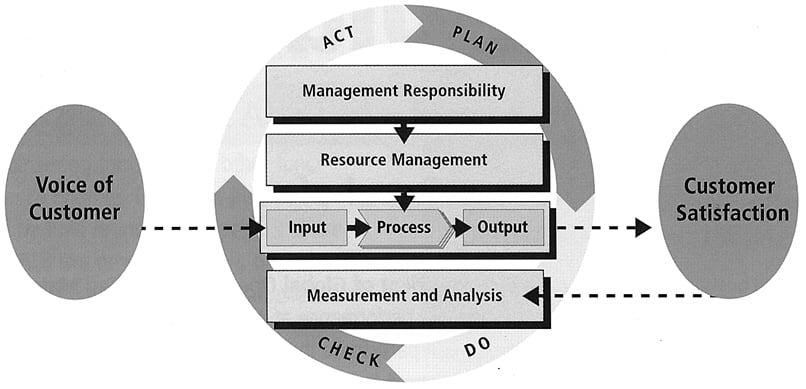 Customer journey mapping is an eye-opener about process gaps — especially when it spans the end-to-end customer life cycle. It’s the job of customer experience management to drive smooth journeys and maximize value across the life cycle. Accordingly, it’s the role of customer experience managers to prevent process silos.
Customer journey mapping is an eye-opener about process gaps — especially when it spans the end-to-end customer life cycle. It’s the job of customer experience management to drive smooth journeys and maximize value across the life cycle. Accordingly, it’s the role of customer experience managers to prevent process silos.
As we’ve analyzed silo quandaries in this series — organizational silos, channel silos, system silos, data silos — a common thread has emerged: there’s a set of silos that your company has created, and there’s a set of silos that customer experience management has created!
Why do process silos exist? Manageability. Myopia. Management’s inside-out thinking. Process silos are a product of organizational silos. And it’s a question of chicken-or-the-egg in whether process silos cause — or are caused by — system silos, data silos, and channel silos.
The crux of the matter is that customer experience suffers from silos. And silos perpetuate because we mistakenly believe they’re too big to tackle. As pointed out in every article in this series:
Your silo detectives should seek ways to expand perspectives, motivations, collaboration and universality whenever a silo is identified.
Here’s how to apply that recipe to prevent process silos:
1) Undo Management’s Inside-Out Thinking
Wallpaper your executives’ and employees’ world with customer experience realities. The good and the bad. Transactions and relationship. Expectations, frustrations, triumphs, wish lists, scenarios, use cases.
Use digital communication, hallway and conference room posters, cafeteria table tents, management talking points, staff meeting discussion points, and every possible mode to immerse your company in outside-in thinking. Keep it fresh, and translate: spell out what each message means to engineers, manufacturing, service, sales, and support functions.
Pool together viewpoints, insights, stories, and so forth from everyone who is responsible for a component of customer experience management.
2) Undo Myopia
Use your customer life cycle journey map to overcome nearsightedness. Simplify the map and include it in your wallpapering. Establish an ongoing cadence of cross-functional workshops for charismatic reps from adjacent processes to roll up their sleeves and work on the pervasive issues standing in the way of smooth customer experience.
The percentage of employees who don’t understand process management is surprising. It’s plain good sense for managers. Don’t baby them by assuming it’s too hard or boring.
Supplier » Input » Process » Output » Customer = SIPOC
If your customer experience management model is vastly different from this one, please re-think it:
3) Undo Manageability Limits
Modify incentives so that managers of adjacent process areas have some say in the standards and evaluation of one another’s performance. Establish frequent communication opportunities between them, emphasizing collective benefits. Have upper management frequently ask how they are helping one another, as in the famous phrase: “help me help you”.
Adjust incentives among those who manage customer experience components, for more collaboration, fluidity, and customer life cycle strength.
4) Undo Silo-ization Tendency
Make it a habit to design-in prevention of silos: when assigning work, creating a process, reporting progress, setting up a system, adding a channel member, onboarding staff and suppliers, and so forth. Business has gotten into deep habits of territorializing and simplifying — and the cost is great in internal frustration and turnover as well as external frustration and turnover.
Start every endeavor with a collaborative spirit. Require real-time gap analysis of customer experience realities versus work assignments, process creation, progress reporting, system setup, onboarding, etc. Whatever you’re doing that is at odds with customers’ well-being is going to be problematic and more costly. It’s worthwhile to shift gears at the get-go to do things right the first time and save all that frustration, re-allocate would-be costs to better investments.
Summary
Process silos can be bridged by expanding perspectives: outside-in thinking aligns employees’ viewpoint with customers’ viewpoint. Every time I’ve had a boss I’ve found that I’m way better off by aligning my viewpoint accordingly. And customers are our ultimate boss!
Process silos can be spanned by adjusting motivations: help managers see that their workload can become more manageable by proactively managing upward and downward in the SIPOC equation. It fosters a do-the-whole-job mentality throughout your company. It prevents a lot of dropped balls, missed targets, and the snowballing effect on customer-facing staff and customers.
Process silos can be cured by increasing collaboration: cross-organizational communication, working sessions, and incentives open new doors to solving chronic issues that were once thought to be too big to tackle.
Process silos are prevented by increasing universality: bake-in holistic mindsets and approaches to work, communication, and everything being created.
Mature customer experience management prevents process silos by facilitating appropriate perspectives, motivations, collaboration, and universality.
This article is sixth in a 12-part monthly series:
- 10 Silos Impact Customer Experience
- Silo Detectives for Organizational Collaboration
- Customer Experience Boggle-Busters for Channel Silos
- Solving System Silos for Customer Experience Excellence
- Customer Experience Data Silos Demystified
Image purchased under license subscription from Shutterstock.





This is a great write up.Process silos can be bridged by expanding perspectives: outside-in thinking aligns employees’ viewpoint with customers’ viewpoint. This is my take away.
Thanks for your comment, Joseph. As challenging as it may be to facilitate change internally, it’s actually more feasible than facilitating change externally. Best practice is to hire the right mindsets, in accordance with what your primary customer target audience values most. Here’s another article you may appreciate: How Human Resources Can Add Value to Customer Experience Excellence.